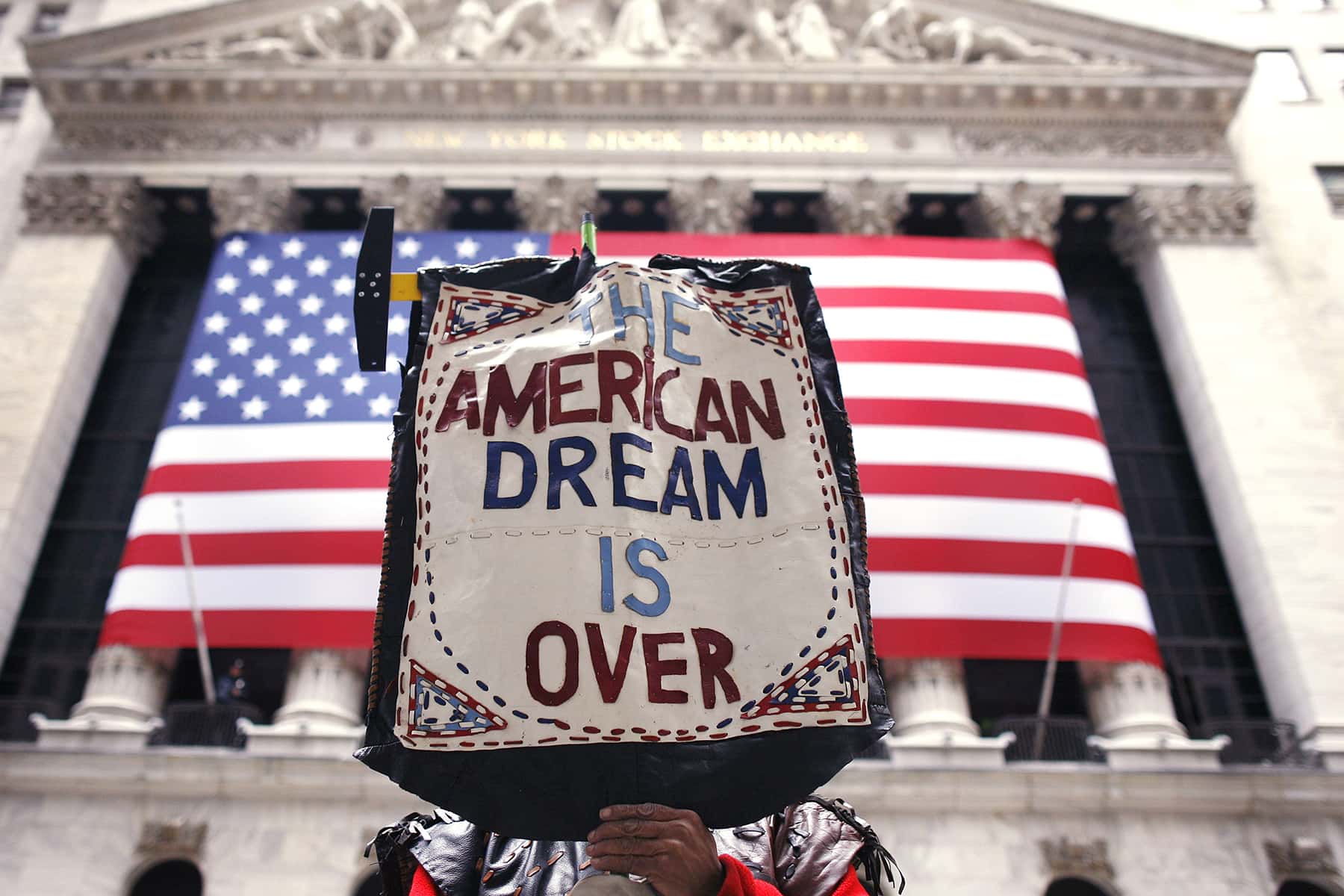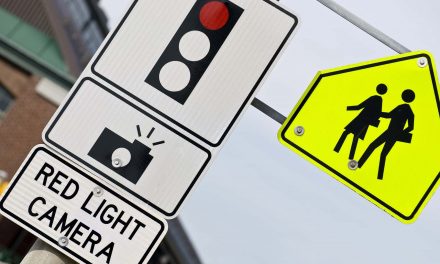
By Mechele Dickerson, Professor of Law, University of Texas at Austin
The American Dream that has existed in this country is on life support, and for some Americans it may already be dead.
While recent consumer confidence surveys indicate that Americans seem somewhat optimistic about the overall economy, most polls and studies show that we are anxious about our own economic futures. Many Americans no longer seem to believe that they will ever be financially secure or stable. The belief that you can succeed financially with hard work and determination has been a core tenet of the American Dream. Now more than three-quarters of all Americans believe that downward mobility is more likely than upward mobility.
Are the foundational elements of our collective dream and middle-class lifestyle – owning a home, having stable employment and retiring debt-free and financially secure – now out of reach for most of us, especially the young? And has the problem of the vanishing middle class now reached a group that had seemed entrenched, suburban white Americans?
I have been researching these themes recently while writing a book on the topic. In part I am trying to understand what these disturbing trends – including stagnant wages and runaway debt – mean for the American Dream, a term first coined by writer James Truslow Adams in 1931, as three core tenets:
…that dream of a land in which life should be better and richer and fuller for everyone, with opportunity for each according to ability or achievement.
Housing is unaffordable
Since the Great Depression, the American Dream has been linked to homeownership. Now, almost 10 years after the worst economic crisis since the ‘30s, America is well on the road to becoming a renter nation. While the cost of buying basic staples (like food and clothing) has largely remained the same or dropped over the last 30 years, housing prices have soared, especially during the housing boom in the early 2000s. Prices fell during the 2007-2009 recession, but they have since recovered and are rising in many regions in the country.
As prices rise, homeownership rates are going in the opposite direction. After peaking at almost 70 percent in 2004 during the housing boom, they’ve plunged, falling to below a 50-year-low of below 64 percent in 2015. As homeownership rates have dropped, the number of renter households has grown. In fact, renter households are now the majority in nine of the 11 largest U.S. metropolitan areas. Renting is no longer limited to recent high school or college graduates as the majority of renters in the country are 40 years or older, up from 43 percent in 1995.
While no state, county or major city in the United States has enough affordable housing for its poorest residents, it’s not just those families who are forced to rent. Even Americans employed full-time are now struggling to find affordable rental housing, in part because demand has surpassed the supply of such units, causing rental prices to rise.
Just a decade ago, these middle-income families might have become homeowners, but now they are putting pressure on the rental market because they can’t afford to buy. That leaves fewer affordable rental homes or apartments for everyone else. One of the primary reasons families cannot afford to buy homes or find affordable rental housing is that housing costs have risen quicker than household income.
Downward economic mobility
The fact is that for all but the highest-paid workers, wages have been stagnant for almost 30 years. In addition, American workers must now contend with an unstable and unsteady labor market.
While unemployment rates are now below 5 percent, well below the historically high rates during the Great Recession, all but the best-paid workers routinely experience multiple, sustained periods of unemployment. Likewise, workers are now more likely to be under-employed and hold jobs that require less training or education than they have. Also, workers are more likely to hold more than one job at a time and quilt a “patchwork of paychecks” together just to make ends meet.
Stagnant wages and unsteady employment have helped create income and wealth inequality gaps that are now approaching levels this country has not seen in almost a century. Because the richest Americans are receiving a disproportionate share of income and wealth in the U.S., the American Dream of upward mobility from the lower to the middle-class has all but vanished.
And some even argue that generational mobility is now more likely in some European countries than it is in the United States. Because wages have not kept pace with soaring housing prices in most places in this country, Americans must now make trade-offs and sacrifices. One-fifth of all employed Americans must find ways to supplement their income just to pay bills and buy groceries. Fourteen percent are spending more on their credit cards to pay for their monthly living expenses, and 17 percent of workers have been forced to sacrifice their retirement security.
Retirement insecurity and instability
Things look bleak for those Americans nearing retirement. As for young adults, financial security during their sunset years seems almost hopeless. Federal Reserve data show that 31 percent of people who have not yet retired and 19 percent of 55-64-year-old adults who are nearing retirement age have no postwork savings or private pension.
Older baby boomers who either have retired or are approaching retirement often find that they have inadequate savings even though many of them worked for employers who provided traditional pensions rather than 401(k)-styled employee-funded individual savings plans. Americans coming into retirement are also burdened with more housing, automobile and even student loan debts than people their age did a decade ago. As a result, many baby boomers have decided to push back their retirement date.
Younger Americans are also struggling to save for retirement. Young adults lack retirement savings because many of them are part-time workers who do not have access to a plan that sets aside some of their pay or because they are too burdened with student loan and other debts to be able to save for retirement.
The death of the dream
Americans who have worked hard and played by the rules now fear that they will never be financially successful. They have lost faith in the American Dream. They are disillusioned, and they are showing signs of despair. Both conservative working-class Americans who do not have a college degree and ultra-liberal college-educated millennials are displaying their anger in this presidential election cycle.
Many voters who have lost faith in the American Dream are embracing nontraditional populist candidates like Bernie Sanders and Donald Trump. Disenchanted and disaffected voters seem willing to support extreme views and proposals because they no longer believe that traditional political candidates will find a way to create secure jobs that pay decent wages and help move the working class into the middle class.
One group in particular – whites aged 45 to 54 without a college degree – appears to have given up on the American Dream. White non-college Americans, especially males, no longer seem to believe that hard work and determination is enough to achieve financial success.
They blame politicians, particularly President Obama, for pushing economic policies that harm the middle class. They are anxious, they are angry and they doubt that their high school diploma or work skills will be enough for them to succeed in the job market.
Disturbing physical signs of this economic anxiety includes increased first-time heroin use by whites, particularly young males, shortened average lifespans and their rising suicide rates. While the American Dream of upward mobility and financial security is alive and well for the richest Americans, lower- and middle-income Americans have never felt less secure financially than they do now.
Downward mobility is now the new normal for most Americans. Upward mobility is now an almost insurmountable dream.
Originally published on The Conversation as Is the American Dream dead?
Support evidence-based journalism with a tax-deductible donation today, make a contribution to The Conversation.














